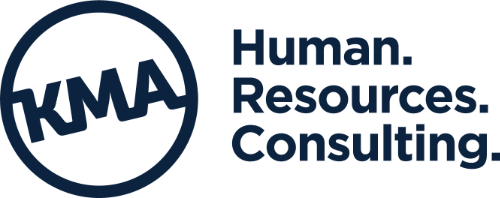
May 1, 2024
Hello friends!
As we roll into May, we are recognizing Mental Health Awareness Month, a time to appreciate the deep impact mental health has on our whole lives, including in the workplace. With an increasing number of individuals, particularly younger generations, grappling with anxiety, stress, and other mental health challenges, this has become an issue of our time, and there is no ignoring it.
In the plain yet profound words of the Greely High School chapter of KyleCares, a non-profit promoting honest communication about mental health challenges in teens and young adults, “It’s ok not to be ok.” We have to remove the sense of stigma and shame around this issue so that everyone who needs help feels comfortable accessing it. This news story features my son, Charlie Anania, who established the KyleCares chapter at his high school to help himself and support his fellow students. Check out some photos from their Mental Health Matters 5K fundraiser on April 28th below.
This is a struggle that naturally also affects workplace dynamics and productivity. Employees who are dealing with mental health issues may experience difficulties in concentration, engagement and performance, and have high absenteeism. According to ComPsych, in 2023, mental health leaves of absence were up 30% over the previous year, and up a whopping 300% since 2017. Given this trend, it’s crucial for employers to create a supportive environment that fosters mental well-being and reduces the stigma associated with this issue.
Here are some initiatives to address mental health at work:
- Promote Open Communication: Encourage employees to openly discuss their mental health concerns without fear of stigma or discrimination. Establishing a culture of empathy and support can go a long way toward normalizing conversations about mental health.
- Provide Resources and Support: Offer access to mental health resources, such as counseling services, support groups, and employee assistance programs. Providing these resources demonstrates a commitment to employee well-being and encourages individuals to seek help when needed.
- Offer Flexible Work Arrangements: Consider offering flexible work arrangements, such as remote or hybrid work options, or flexible hours to accommodate employees’ varying needs and schedules. This flexibility can alleviate stress and promote a healthier work/life balance.
- Provide Tools and Training: Organize workshops and training sessions to raise awareness about mental health issues, and equip managers and employees with the tools to recognize and address them. Download this toolkit from NAMI (National Alliance on Mental Health) as a start.
- Lead by Example: Leadership plays a crucial role in shaping organizational culture. Leaders should prioritize their own mental well-being and demonstrate empathy and understanding towards their team members.
- Check out These KMA Articles Addressing Different Aspects of Employee Wellbeing:
- Leading Through Pressure: Considerations for Managing Workplace Stress
- What Employers Should Know About Trauma in the Workplace
- Six Ways to Encourage Employees to Set Work/Personal Life Boundaries
- Strategies for Improving Employee Wellbeing
- Summer is the Ideal Time to Launch or Boost Your Employee Wellness Program
Let this month remind us to make it a practice to connect with a friend, family member, co-worker, neighbor, or anyone in your life who may be isolated, vulnerable, or who might just need a check-in. Let them know you see them, are thinking of them, and are available to talk or visit. While no one person can solve this issue alone, we each have the power to do small things to take care of one other, and I know from personal experience that can make a world of difference!
Here’s what else is going on at KMA:
Please participate in our Bi-annual Employee Benefits Survey
Every two years, the KMA Compensation team develops an extensive employee benefits survey to gather data from New England-based businesses. We utilize the results to help our clients determine how their benefits offerings compare to the market, and glean critical insights into what businesses of various sizes, locations and industries are offering to attract and retain talent.
Once the responses are collected, our data compilation and analysis phase begins, distilling trends and correlations. The end result is a professionally-designed 30+ page report that presents the data sets in an accessible way, highlights key insights, and integrates charts and graphs to visually communicate the results. This year, survey participants will receive the full 2024 Employee Benefits Report for free!
In addition, we are pleased to announce that our partners at Acadia Benefits and Lebel & Harriman are sponsoring this year’s survey. A huge thank you to both organizations for supporting us in this major undertaking.
The survey is now live and extended through the end of May, and will guide you through a series of questions about benefits, perks, work arrangements and more. It should take about 35 minutes to complete.
Thank you in advance to all participants; we look forward to sharing the comprehensive, professionally-designed PDF report with you this fall.
 The True Cost of a Bad Hire and How to Prevent this Common Mistake
The True Cost of a Bad Hire and How to Prevent this Common Mistake
Ultimately, a company is its people, and having the right people in place is critical for the growth and success of any business. That’s why it’s so crucial to avoid the negative consequences of making a bad hire.
KMA in the Community
KyleCares Mental Health Matters 5K – April 28th



Happy Mother’s Day to all the moms on May 12th. This month we’re also honoring nurses and teachers, two professions undeniably deserving of celebration. And we’ll cap it all off with the Memorial Day long weekend – what I like to call the gateway to summer. Bring on the vitamin D!
Thanks for reading along.
 Kim Anania
Kim Anania
President and CEO
KMA Human Resources Consulting


 The True Cost of a Bad Hire and How to Prevent this Common Mistake
The True Cost of a Bad Hire and How to Prevent this Common Mistake